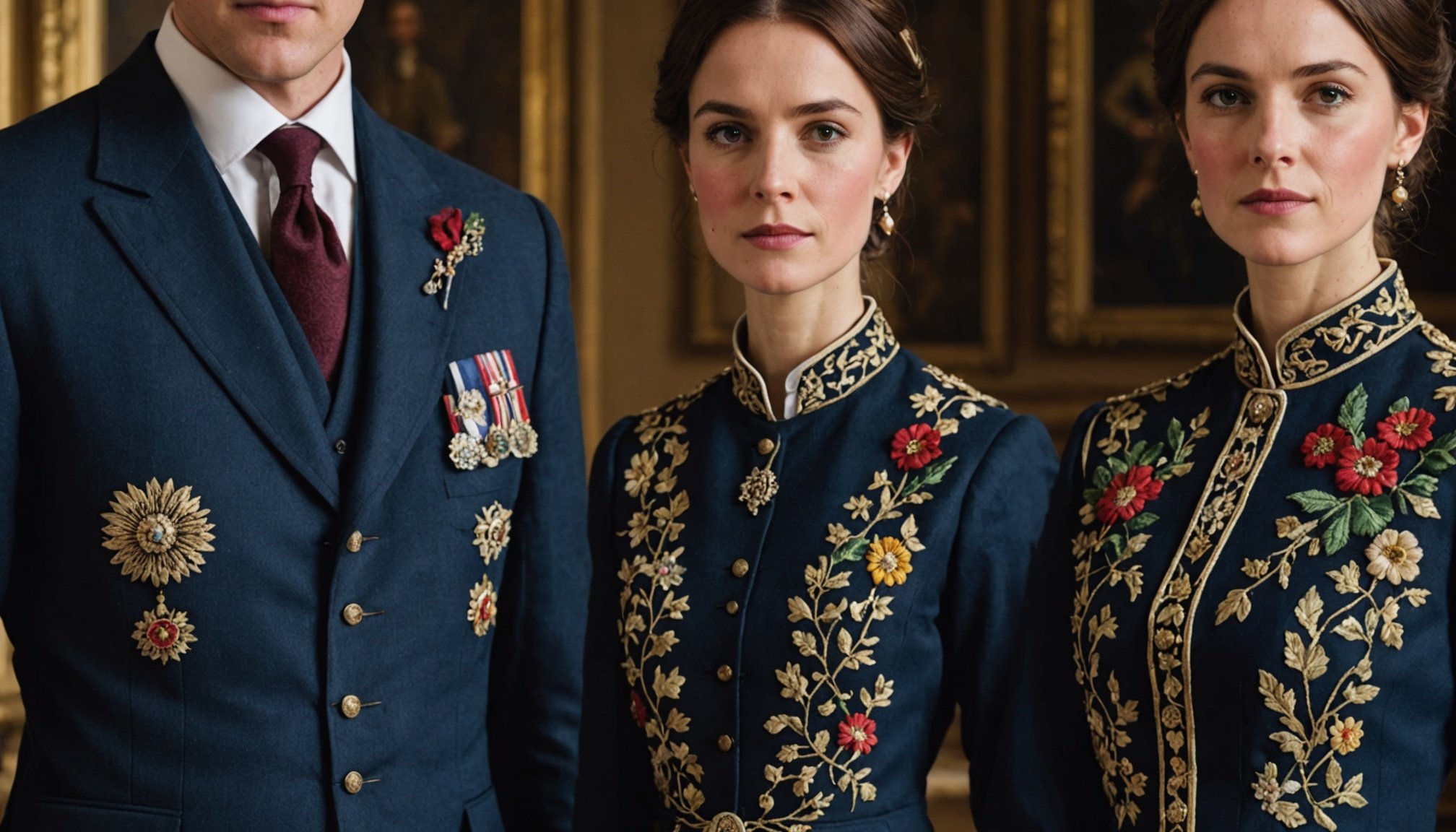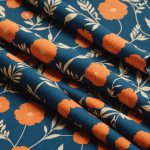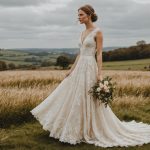Overview of Traditional British Attire
Traditional British clothing holds a rich cultural history that reflects the country’s diverse heritage. Rooted deeply in customs and traditions, traditional British attire is not just about style but also about the evolution of social norms over time. Essential pieces include garments like the classic tweed jackets, kilts, and the iconic bowler hats, each reflecting different aspects of British fashion heritage. These elements of traditional British attire have grown beyond their original purposes to represent national pride and identity, often seen at various ceremonial events today.
Throughout history, British fashion has embraced an evolution that mixes customary attire with contemporary influences. This fusion has created a versatile wardrobe that retains the heritage while meeting modern style demands. As British fashion continues to evolve, traditional attire remains an integral part, influencing designers globally to incorporate classic elements into contemporary collections.
Have you seen this : Discover your ideal blush shade for effortless, natural makeup looks in london
The combination of traditional and new styles speaks to a resilient fashion legacy, capable of adapting to trends while preserving its roots. Traditional British attire remains relevant and inspiring, highlighting the perennial charm of British fashion heritage.
The Art of Embroidery
Embroidery techniques have ingrained themselves in fashion as a decorative stitching method that stands the test of time. In traditional British attire, embroidery serves as a key element, illustrating both heritage and craftsmanship. From fine tapestries of regal garments to the intricate lacework adorning noble ensembles, various embroidery styles have played significant roles in maintaining cultural customs while offering aesthetic appeal.
Also to see : Seamlessly fusing vintage accessories with contemporary fashion: your ultimate style guide
There’s a rich spectrum of embroidery techniques, including blackwork, crewel embroidery, and cross-stitch, each contributing uniquely to fashion. Blackwork, often characterised by its monochrome tones, brings elegance to garments, whereas crewel embroidery uses wool threads creating textured patterns that capture nature’s beauty.
Embroidery doesn’t just embellish clothing; it adds personality and depth, transforming ordinary fabric into storytelling canvases. The versatility of decorative stitching allows for the preservation and modernisation of traditional attire, imbuing garments with meaning and artistry. Every stitch carries the weight of history, providing a tangible link to the past while continually inspiring present and future fashion narratives.
Design Ideas for Customization
Designing custom embroidery can be a fascinating journey into personalized fashion. Infusing traditional patterns into embroidery not only showcases a rich cultural heritage but also offers timeless elegance. Patterns reflective of customary British attire such as paisleys or floral motifs become a bridge between past and present.
Traditional Patterns
Incorporating traditional patterns is essential in keeping an attire’s classic appeal. These motifs often draw from historical contexts, featuring intricate designs that convey deeper meanings or celebrate specific customs. They maintain cultural significance while enhancing aesthetic appeal.
Modern Interpretations
Bringing a contemporary touch to custom embroidery can reinvigorate traditional styles. Modern interpretations explore using dynamic colours and abstract designs, making them suitable for today’s fashion-forward thinkers. Personalised embroidery offers the flexibility to merge classic elements with contemporary aesthetics seamlessly, ensuring the outcome resonates with one’s personal style.
Seasonal Embellishments
Aligning embroidery styles with seasonal themes brings a refreshing viewpoint to customization. Whether it’s vibrant hues for summer or muted tones for autumn, seasonal embellishments add a unique twist to garments, making them relevant and fashionable throughout the year. These thematic choices make every piece distinctly yours.
Benefits of Customizing with Embroidery
Customizing clothing with embroidery offers a multitude of personalization benefits. For those looking to make unique fashion statements, embroidery allows for a personal touch in every stitch. By incorporating custom designs, individuals can wear a piece of clothing that truly reflects their identity and style preferences. This form of personalization is not just about aesthetics; it empowers wearers to express themselves in distinctive ways.
One significant advantage of custom embroidery is its contribution to sustainable fashion. Unlike mass-produced clothing, personalized embroidered pieces can reduce waste by repurposing or enhancing existing garments. By choosing custom embroidery, individuals participate in a more sustainable approach to fashion, valuing quality and longevity over quantity and disposability.
Furthermore, the uniqueness of customized embroidery designs increases their sentimental value, often resulting in garments that are cherished for years. These unique pieces often become family heirlooms, carrying stories and meaning across generations. With custom embroidery, every wardrobe addition is not just a piece of clothing but a testament to personal history and creativity, making each garment a personal narrative woven into fabric.
Finding Skilled Embroiderers
Finding skilled embroiderers can elevate your garments with artistry and expertise. Embroidery services range from local artisans to professional studios, offering unique styles and techniques. To choose the right professional for your embroidery needs, consider these steps:
-
Verify Credentials: Assess the experience and qualifications of potential embroiderers. Look for reviews or certificates that demonstrate their proficiency in various embroidery techniques.
-
Review Portfolios: Request examples of previous work. A diverse portfolio not only showcases the decorative stitching skills of the artist but also gives insights into their style versatility.
-
Local Support: Supporting local artists not only fosters community growth but often results in more personalised service. Local artisans may offer unique interpretations that resonate with cultural significance, providing authenticity to your traditional British attire.
Recommendations for finding skilled artisans include visiting local markets, checking online platforms showcasing artisans, and attending craft fairs. Embroidery is a personal journey; choose an embroiderer who understands your vision for turning a garment into a piece of art. This process not only enhances your wardrobe but supports the legacy of skilled craftsmanship.
Visual Transformations: Before and After
Embedding embroidery transformations into garments not only revitalises traditional attire but also offers a compelling visual storytelling aspect. Imagine a plain linen shirt, seemingly unremarkable, transformed by intricate floral motifs blooming across its surface. Through visual guides, the metamorphosis is revealed, highlighting the impactful artistry that embroidery offers.
A project showcase can vividly demonstrate the potential that embroidery holds. For instance, envision a classic tweed jacket, a staple of traditional British clothing, rejuvenated with delicate decorative stitching along the lapels or cuffs. Such enhancements elevate the garment while preserving its essence, illustrating the endless possibilities of blending British fashion heritage with contemporary creativity.
Witnessing these transformations instils inspiration and empowers individuals to explore their fashion narratives. Readers are encouraged to embark on their own embroidery projects, capturing the impact on their traditional outfits or even contemporary pieces. By sharing these transformation stories, a community can thrive on the boundless creativity and shared experiences, adding personal chapters to the evolving saga of textile art. This process ensures that each transformation is not only visually compelling but personally meaningful.
Step-by-Step Guides for DIY Embroidery
Exploring DIY embroidery projects can be an exciting venture for those eager to personalise their wardrobe with handcrafted finesse. Committing to these projects not only celebrates creativity but helps forge a deeper connection to your attire.
Basic Tools and Materials
For any beginner guides, having the right tools is essential. Embroidery hoops, various needles, quality threads, and a pair of sharp scissors form the foundation of your crafting toolkit. Choosing the correct fabric plays a pivotal role, often opting for cotton or linen due to their ease of use and versatility.
Simple Patterns for Beginners
Embarking on simple patterns like basic shapes or small floral designs is ideal for beginners. These patterns offer a gentle introduction into stitching techniques without overwhelming complexity, allowing for gradual skill development.
Enhancing Existing Garments
To enhance existing garments, consider adding embroidery around cuffs, collars, or hems. Simple geometric designs or personalised monograms can elevate a bland piece, infusing it with new life and character. These techniques empower you to refresh your wardrobe on a budget, customising attire to reflect your unique fashion story.











